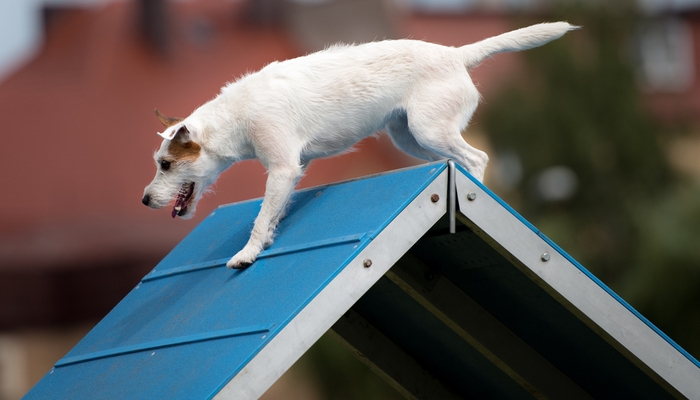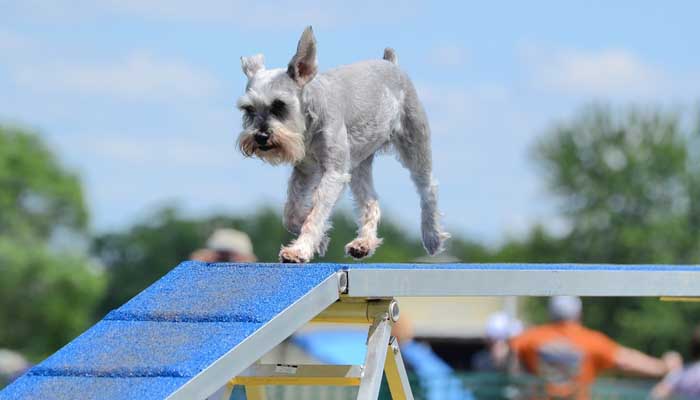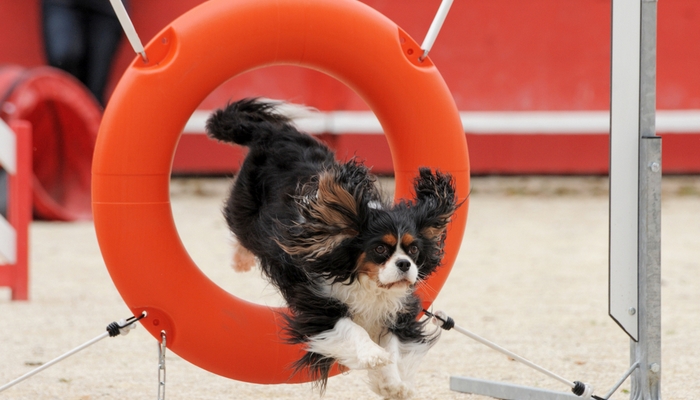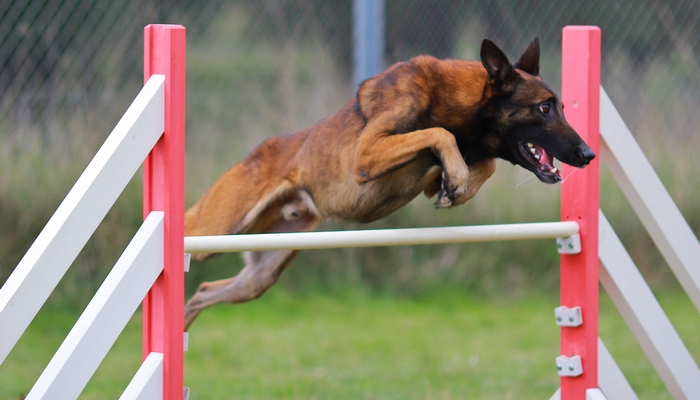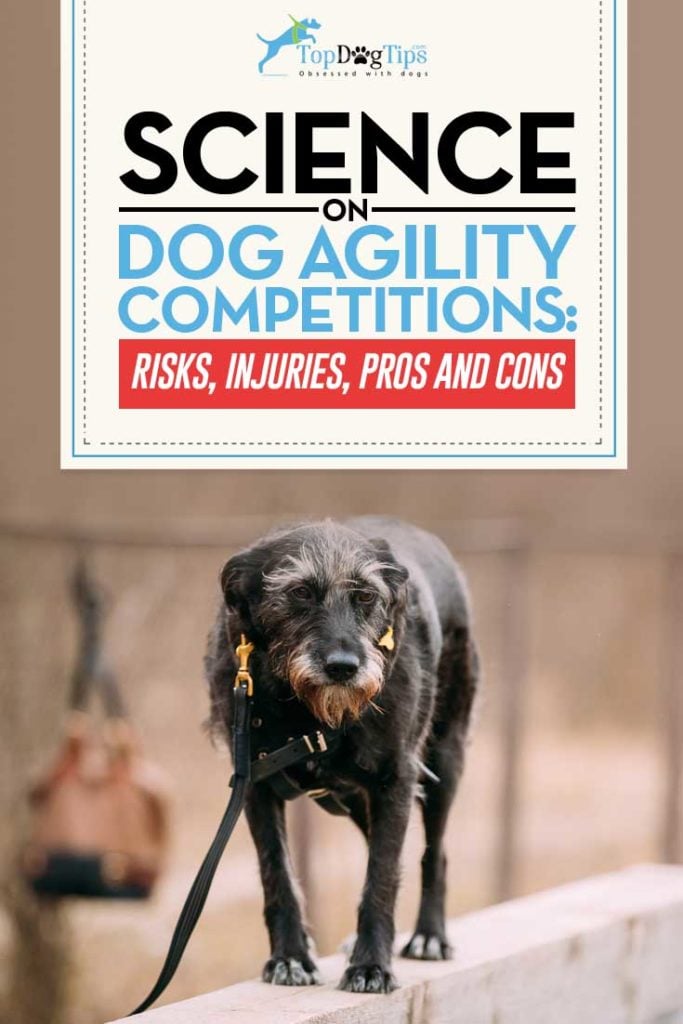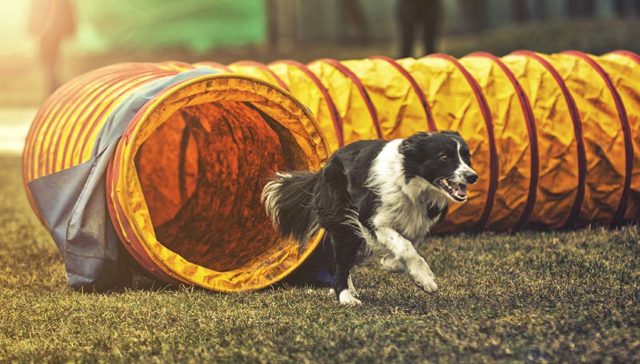
Table of Contents
Agility dogs are hard-working, sporty, and attentive to what their owners want them to do, and with this sport, communication will be key. Fun aside, there are many other benefits to starting in dog agility competitions, and while some breeds are better suited for this, nearly any dog can be trained for agility activities.
If you are considering dog agility competition training for your pet, this beginner's guide will walk you through what you need to know first.
If you think the breed you have can't go through the agility courses, you're likely mistaken.
All dogs—big, small, short, and tall—can excel at agility training and competitions, says expert Graham Taylor.
The only exception is that some associations will only accept purebred dogs (of any breed).
“The only criteria for an agility dog is that it is fit and active – we don’t care what it looks like or who its parents are.”
Dog agility training and competitions is a fairly recent dog sport that began in England in 1978 with AKC holding its first competition for canine athletes in 1994.
Today, dog agility sport has grown immensely to become one of the most popular canine activities, with an average 9% annual popularity growth.
If you're looking to get into the field, now is the right time to start agility training your dog.
Dog Agility Competition Training FAQ
Pet owners are interested in the benefits of this sport for themselves, and their pups don't necessarily have to go into dog agility competitions.
If you only care about improving the bond and communication between you and the dog, having them exercise, and so forth, you can do this without competing.
It's easy to set up a small agility area in your backyard with some tunnels and jumps, or even a full-on agility course, and go from there.
However, if your goal is competing on a professional level and winning awards, fame, and money, you'll need to dedicate far more time to this, as any professional athlete would.
One of the first important components to learn before you even get into physical training is how effectively you communicate with your dog.
Communication between the handler and the animal is key for successful agility training.
Dogs learn that it's essential to actively listen to their owner, and they genuinely want to do well to impress their human.
Before you begin spending time and money on this, there are a few things you must know about dog agility competition to decide whether it's for you (and your dog) or not.
The first place to visit and read some general FAQs on dog agility training and competing is The Kennel Club FAQ page.
This will answer most of the questions of dog owners and new handlers.
There's also more advice for slightly experienced handlers who have already started with agility training and even went to their very first competition.
One thing many resources out there seem to ignore is the potential risks of training a dog for agility competitions.
Yes, there are some, and it's crucial that you're aware of this before you start.
In this article, we'll investigate what veterinarians, dog trainers, and science say about the pros and cons of dog agility sport, its risks, and possible injuries.
The Pros and Cons of the Dog Agility Competition
Why Owners Get Into Dog Agility Competition
One of the major benefits of dog agility training is it helps to solve behavioral problems caused by boredom, apathy, depression, anxiety or any other canine mental disorder because it gives your pup a job. When dogs feel like they have a specific purpose, they stop acting out to focus on the task at hand (or paw, rather).
Studies have demonstrated that canine agility benefits a dog's body and even prevents diseases and injuries in some cases.
It was also shown how this training exercises a dog's mind.
Because your pet has to think on their feet and follow commands in a split second, this sport keeps the dog interested, focused, and mentally stimulated.
Handlers also get plenty of exercise. Because agility training is physically demanding for both the dog and the owner, it's necessary that the two of you are healthy enough to run the agility course.
So, before you begin, talk to your veterinarian to ensure the dog does not have any health problems that can be exacerbated by agility training.
These activities are particularly demanding on a dog's joints and spleen.
Agility demands a dog to follow commands and interpret them quickly into action. Thus, it will make all other non-agility aspects of your dog’s training better.
Moreover, because agility is run by a handler instructing a dog without a leash, this sport greatly improves the dog’s off-leash reliability.
Even if you're not thinking about getting into dog agility competition seriously, agility tricks themselves can be a fun thing to show off to your friends.
Many dog owners do agility training and never compete.
You can buy dog agility kits to set up in your own yard and get yourself and your pet working.
Some kits can be expensive, but others run anywhere from $50 to $100 and are fairly affordable to start agility training at home.
Science on Risks of Dog Agility Training
“It sounds like canine agility training is fairly physically demanding. Are there any risks involved with training my pet for a dog agility competition?”
Yes, there are risks involved.
Just like with almost any other sport or physical activity, pet owners and their dogs have to be careful with this practice and be aware of the potential dangers of agility training.
The stakes are even higher when training for a dog agility competition because you'll need to keep pushing yourself and the dog to do better. The more you practice, the more likely your dog may get injured.
Several studies and surveys have found that certain dogs may be at risk of injuries that are directly related to dog agility competition training, with their limbs being the most commonly injured body part.
A paper on the kinetics of jump landing in agility dogs (study) found that some agility obstacles are riskier for dogs than others.
Another survey-based research paper (study) on dog injuries working on agility training found the same thing.
From this, we can see that prevention of risk factors and educating yourself on what can go wrong during canine agility training are the best ways to approach these events and training for them in a safe(r) manner.
It's possible that certain breeds are more prone to agility injuries than others.
For example, a retrospective survey (study) of injuries related to canine agility has found that Border Collies may be at higher risk of getting injured.
The paper also mentions specific dog agility obstacles that are more dangerous to Collies than others.
In terms of more injuries, another research paper (study) on the epidemiology of injury among handlers and their dogs found that not only does dog agility competition training pose certain risks for canines, but this practice may also put dog owners at risk.
The above study's conclusion doesn't apply to every dog owner and/or every dog, but it does bring up many good points that pet owners should pay attention to, such as which agility exercise needs to be prepared for better (study) to avoid dangers, and which training methods are best to avoid for specific dogs.
Finally, an internet-based survey from AVMA (study) provides statistics on injuries related to dog agility training and competitions, which anybody considering this sport should take a look at before embarking on this venture.
The Bottom Line on Agility Risks and Injuries
When weighing the results of the above evidence as well as the advice from experienced professional dog trainers and veterinarians, it's not surprising that dog agility competition training increases the risk of injuries in dogs.
This applies to nearly any competitive sport under the sky.
With the above considered, should owners avoid canine agility training and competitions?
Not necessarily. As noted above, this type of activity can also prevent injuries when done properly and safely.
Furthermore, dog agility training and competition are great ways to exercise the dog and strengthen not only their body but also the bond between you and your pet.
However, due to the risks of injuries, this type of training must be taken seriously.
Remember that certain breeds are not designed for agility exercises. Other dogs may not be healthy enough to compete or are genetically predisposed to disabilities, which increases the risk of injuries.
And some agility obstacles are simply more dangerous than others.
When you're aware of these factors, you can start training your dog in agility while also keeping them safe and healthy.
Getting Started in Dog Agility Competition
Not to be a downer, but after the risks of injuries have been considered, the other downside of dog agility competition and training is that it can be very expensive.
If you're not doing everything yourself, then professional agility training classes and trial fees can rack up quickly.
But don’t be discouraged because there are ways to get around some of the monetary demands.
For example, you can do a lot of dog training at home by yourself.
There are many free YouTube videos that will help you get started, and all of the equipment can easily be made at home using a DIY approach.
You could also take some cheap canine agility beginner courses, and once you have the hang of it, continue to train your dog at home.
Getting started in dog agility is actually easy. Because it has gained so much popularity, there are classes and trainers in almost every city.
Get connected with a group or trainer so that you can learn (at the very least) the basics.
For example, if you're in Austin, Texas below are some potential classes to consider:
It's nice to be part of a group because other members can help and support you. Read online forums and subreddits on Reddit (e.g., /r/DogTraining, /r/DogAdvice, /r/dogs, and /r/Agility).
You can also join Facebook groups for advice on training or to find cheap used dog agility equipment online.
Some popular ones are below:
- Susan Garrett's Free Agility Workshops
- Free Training Workshop
- Agility Training and Discussion
- Used Agility Equipment
- Training Advice and Support
Visiting the above websites, subreddits, and Facebook groups will connect you with people who can help with more advice and tips on getting started correctly.
If you're serious about dog agility competition on a professional level, then other than training and classes, you'll also need to find a club in order to get registered.
In the US, we have several such canine agility clubs:
There are also local clubs you can become a part of as well, which many dog trainers and veterinarians recommend for pet owners new to agility competitions.
Search for them on Google or ask local classes, training groups and your veterinarian.
Further Considerations
Your dog must be at least 18 months old to compete, and this is a good thing.
Puppies are still developing their bones, so doing high jumps can cause them to have problems that can scar them for life.
If your pooch doesn't qualify yet, there are plenty of other dog-friendly sports to get into.
When training a puppy for agility, to start with, simply lay the bar on the ground and have them step over it.
For small dogs they are usually ready for jumping at a year old, but for big dogs can take anywhere from 18 months to two years to fully develop.
Check with your vet to see if your dog is ready for jumps.
Your Fido should also be well socialized because there are bound to be distractions, and he will be off-leash. He should be friendly to both people and other dogs.
When starting out, there are some things you will have to learn about your dog, yourself, and the dog agility competitions you go to.
First, you will need to find out what motivates your dog.
Is it healthy dog treats? Tennis balls?
This is how you will be motivating him to follow your commands and do the work.
However, these items cannot be used while competing, only for training.
Figure out which way you are most comfortable handling your dog. Which hand are you going to use to direct the dog?
Which side of you will he be on?
Then, learn the rules for each specific club or organization.
They all have different rules, so pay attention to which competition you are at and what can disqualify you.
Lastly, set goals for what you want to achieve.
Are you going to be fully committed to competing or just do it occasionally?
Commonly Asked Questions
Is Dog Agility Cruel?
No, dog agility competition is not cruel at all.
As we stated earlier, there are many benefits, and it is quite mentally stimulating for the dog.
When a dog continues to receive mental stimulation on a consistent basis, it is directly correlated with its overall wellbeing.
Dogs that lay around all day, depending on age (we are assuming puppy to adult), end up becoming bored and destructive.
For example, in humans, cognitive decline accelerates when the brain is not being stimulated. This is why patients with Alzheimer's and dementia rapidly decline.
The same rule applies to dogs.
Can Any Dog Compete in Agility?
Yes, any breed, including mixed breeds, can join in on agility competitions!
This is a great opportunity for you to bond with your dog, too!
Final Points for Dog Agility Competitions
Early training is great, but go easy on your puppy.
The best age for an agility dog is between the ages of 4 and 6, but everyone is welcome.
Don’t underestimate the positioning of the course.
It may look easy in a walk-through, but the courses are set up to be challenging.
Don’t just memorize it.
You need to analyze the course and plan how you are going to run it.
Make good contacts.
This can help you make connections that could lead you to getting better training and better equipment and help you be successful.
Agility should always be fun for both dog and owner, so keep it fun.
Have lots of positive reinforcement, and enjoy the time you are spending together.
Don’t get impatient when your dog doesn’t do something correctly.
It will take time for him to learn all of the new information.
Above all else, the health and welfare of the animal are the most important.
Don't push him to train too hard.
He doesn’t need it.
A few training sessions a week, whether in class or at home, is enough.
READ NEXT: 10 Best Dogs To Run With & Breeds That LOVE To Run
Want to share this?


